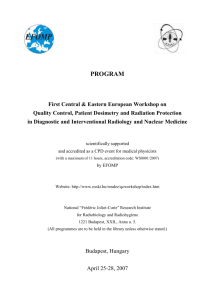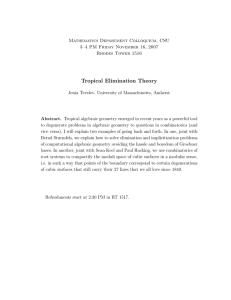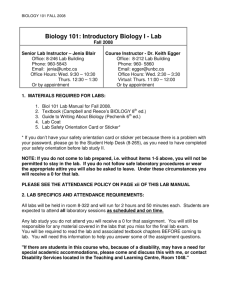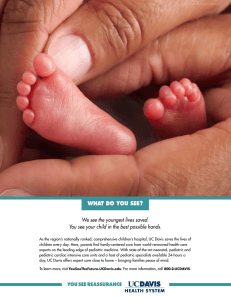Experience of pediatric CT practice in over 40 countries Jenia Vassileva, PhD
advertisement
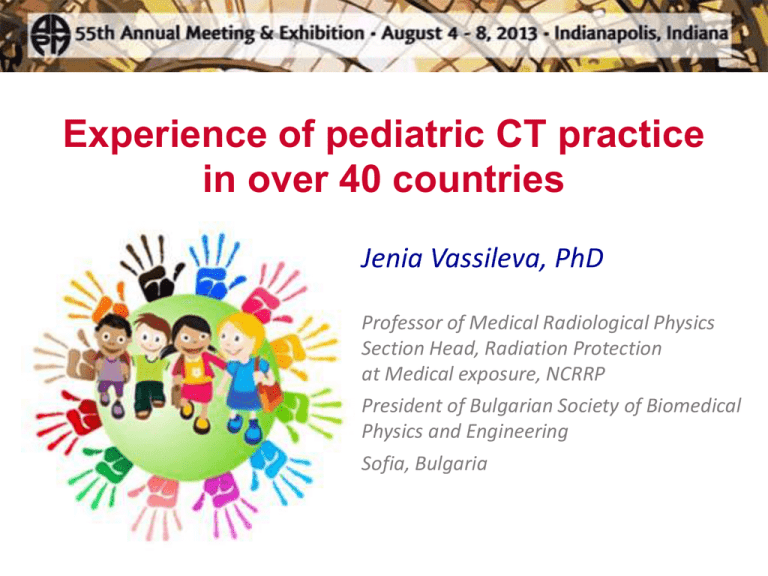
Experience of pediatric CT practice in over 40 countries Jenia Vassileva, PhD Professor of Medical Radiological Physics Section Head, Radiation Protection at Medical exposure, NCRRP President of Bulgarian Society of Biomedical Physics and Engineering Sofia, Bulgaria Bulgaria Population: 7,5 million Member of UN since 1955 Member of IAEA since 1957 Member of EU since 2007 About 70 clinical medical physicists Jenia Vassileva 2 International cooperation IAEA • training courses - regional - national (lecturers) • regional projects • individual fellowships European Union • twining projects • research projects • other projects Other • conferences • meetings Jenia Vassileva 3 http://rpm2010.roentgen-bg.org/ 280 participants 55 countries Jenia Vassileva 4 Jenia Vassileva 5 IAEA project on pediatric CT Introduced in January 2010 Three phases Phase A. Overview of the practice in pediatric CT • Form A1. Data for CT scanner, number of CT examinations in 2007 and 2009 and typical exposure parameters for CT examinations of adults and children • Form A2. Questionnaire for pediatric radiologist (appropriateness) • Form A3. Questionnaire for radiographer (practice) Phase B. Retrospective study of patient doses for pediatric CT examinations in 2007 Phase C. Prospective study of patient doses for pediatric CT examinations in 2010 Data collection forms in Excel (separate for each facility/phase) Continuous feedback from IAEA Jenia Vassileva 6 40 countries, 126 hospitals, 146 CT facilities 73 (50%) in Asia 51 (35%) in Europe 10 (7%) in Africa Armenia (1) Belarus (1) Bosnia and Herzegovina (3) Bulgaria (12) Croatia (3) Czech Republic (6) Estonia (2) Lithuania (3) FYR Macedonia (5) Malta (1) Moldova (5) Montenegro (1) Poland (1) Serbia (3) Slovakia (4) Slovenia (1) China (3) Indonesia (1) Iran (10) Israel (7) Kuwait (5) Lebanon (6) Malaysia (1) Myanmar (1) Oman (1) Pakistan (5) Qatar (1) Singapore (1) Sri Lanka (2) Syria (8) Thailand (1) UAE (15) Jenia Vassileva Algeria (4) Sudan (3) Tanzania (3) 12 (8%) in Latin America Brazil (5) Costa Rica (1) Mexico (1) Paraguay (3) 7 IAEA project on pediatric CT Jenia Vassileva 8 IAEA project on pediatric CT Jenia Vassileva 9 CT technology 40 countries, 126 countries, 146 CT facilities Siemens (33%), GE (28%), Philips (16%), Toshiba (15%), others (8%) Year of installation Number of detector rows MDCT with >=64 detectors 31% 1997 2004 27% SDCT 23% after 2005 65% unknown 3% Jenia Vassileva before 1996 5% MDCT with 2-40 detectors 46% 10 Frequency of pediatric CT exams 95 CT facilities in 28 countries • Overall increase of 6.8% in the number of pediatric examinations in 2 years (2007 – 2009) • The frequency of pediatric CT examinations ranged from less than 1% to 49.4%. abdomen • Head was the most frequently 16% scanned body part (69%) chest • No significant difference 15% head between regions 69% Jenia Vassileva 11 Availability of referral guidelines Are written referral guidelines for imaging available in your hospital? (answered by 132 radiologists) YES NO Europe (52 answers) Asia (62 answers) Latin America (8 answers) Africa (7 answers) 0% Jenia Vassileva 50% 100% 12 Lack of availability of previous images Are previous images and/or patient dose records required when refereeing to CT? (129 radiologists answered) YES NO Europe (52 answers) Asia (62 answers) Latin America (8 answers) Africa (7 answers) 0% Jenia Vassileva 50% 100% 13 Appropriateness of head CT Is head CT mandatory for a pediatric patient with an accidental head trauma? (127 radiologists answered) YES NO Europe (52 answers) Asia (62 answers) Latin America (8 answers) Africa (7 answers) 0% Jenia Vassileva 50% 100% 14 Appropriateness Issues Which examination is " the first choice examination" in case of: MRI US X-ray CT 100% 80% 60% 40% 20% 0% Jenia Vassileva 15 CT practice Responses from 141 CT operators from 40 countries Dedicated scanning protocols for pediatric exams available? yes no don't know Africa (7 answers) Latin America (63 answers) Asia (63 answers) Protocols for some age groups were unavailable around 50 % of the facilities surveyed Europe (60inanswers) 94 % Total (141 answers) 0% Jenia Vassileva 20% 40% 60% 80% 100% 16 CT practice Responses from 141 CT operators from 40 countries Indication based protocols for pediatric exams available? yes no don't know Africa (7 answers) Latin America (63 answers) Asia (63 answers) Often protocols were not used for patient examinations Europe (60 answers) 58 % Total (141 answers) 0% Jenia Vassileva 20% 40% 60% 80% 100% 17 Results: Patient doses and protocols In 8.2% of the scanners CTDI values for pediatric patients were higher than for adults in at least one age group and one examination. In 40% facilities the scanning protocols were not adapted to the body size. In 13% of facilities the same protocol was used for all age groups. In > 50 % of facilities, manufacturers’ pre-programmed protocols were used without any change, or, were modified mostly by the manufacturer’s representative. In < 20% validation of displayed CTDI data by measurements was carried out Jenia Vassileva 18 Results: CTDIvol (83 CT facilities) CTDIvol – Chest examination CTDIvol (mGy) < 1y 1-5y 5-10y 10-15y Adult min 0.4 0.5 0.5 0.5 4.7 max 40.1 40.1 27.4 42.0 99.0 average 6.3 6.7 7.6 10.3 13.7 median 3.4 4.9 5.5 7.5 10.9 3d quarter 7.0 8.2 10.0 13.2 15.5 UK,median 2005 12* 13* 20* • Mean and CTDI values increase with age vol DRL in Switzerland, 2008 12 •CTDI The ratio of max/min 5CTDIvol8values10varied between vol Germany, 2007 1.7 and age 2.7 groups 4.3 – 6.8 different examinations (mGy) 2009 3CT in 3.5 5.5 - group from 15France, for abdomen the 5–10-year age up to 100 for chest CT in the <1-year age group. *DRLs in CTDI Jenia Vassileva vol,16 19 Results: Typical exposure parameters Protocols for chest examination of infant (<1 y) in 8 CT facilities with the same 64-detector scanner model (Light Speed VCT, GE) Scanner number mode Tube voltage, kV 39 helical 80 Tube current, mA 129 40 helical 120 102 helical 26 helical t rot, s Pitch value CTDIvol, mGy 0.5 1.3 1.89 120 0.5 0.984 10.21 80 240 0.5 0.984 2.64 80 100-250 0.5 0.96 4.26 0.98 3.2 1.375 4.5 0.9 0.71 0.9 10 Variation in CTDI dose values: helical 100 180 0.4 chest 80 8 • 14-fold helical for 120 0.4 examination 124 • 6-fold helical for abdomen 80 25 0.5 119 • 4-fold helical for head 120 examination 80 0.6 29 Jenia Vassileva 20 Results: Typical exposure parameters Most commonly used is 120 kVp Use of <120 kV: in only 30% for newborn and 12% for 1-15y Jenia Vassileva 21 Results: Typical exposure parameters Tube current - largely adapted to body size, but high individual variations within the same age group Tube current, mA 260 240 head 220 chest 200 abdomen 180 160 140 120 100 < 1y Jenia Vassileva 1-5y 5-10y 10-15y Adult 22 CT practice Responses from 141 CT operators from 40 countries Are any immobilization means available, e.g. straps, swaddling clothes, etc.? Yes No Don't know Africa (7 answers) Latin America (63 answers) Asia (63 answers) Europe (60 answers) 75% Total (141 answers) 0% Jenia Vassileva 20% 40% 60% 80% 100% 23 CT practice Responses from 141 CT operators from 40 countries How often is sedation used for small children (< 5 y old)? Hardly ever in <50% in>50% always Africa (7 answers) Latin America (63 answers) Asia (63 answers) Europe (60 answers) 0% Jenia Vassileva 14% 46% Total (141 answers) 20% 40% 60% 80% 100% 24 CT practice Responses from 141 CT operators from 40 countries How often does CT examination of pediatric patient need supporter in the room? Hardly ever in <50% in>50% always Africa (7 answers) Latin America (63 answers) Asia (63 answers) Europe (60 answers) 18% Total (141 answers) Jenia Vassileva 0% 34% 20% 40% 31% 60% 17% 80% 100% 25 CT practice Responses from 141 CT operators from 40 countries Bismuth shields available? Yes No Don't know Africa (7 answers) Latin America (63 answers) Asia (63 answers) Europe (60 answers) 84% Total (141 answers) 0% Jenia Vassileva 20% 40% 60% 80% 100% 26 CT practice Responses from 141 CT operators from 40 countries Do you keep records of patient doses? Yes No Don't know Africa (7 answers) Latin America (63 answers) Asia (63 answers) Europe (60 answers) 46% Total (141 answers) Jenia Vassileva 0% 20% 54% 40% 60% 80% 100% 27 CT practice Responses from 141 CT operators from 40 countries Is a medical physicist available? Yes No Don't know Africa (7 answers) Latin America (63 answers) Asia (63 answers) Europe (60 answers) 50% Total (141 answers) 0% Jenia Vassileva 20% 50% 40% 60% 80% 100% 28 CT practice Responses from 141 CT operators from 40 countries Is a medical physicist available? 80 70 60 50 40 30 20 10 0 73% 14% 13% full time up to 50% in radiology on request in <20% In only 28% of facilities medical physicists is involved in optimisation Jenia Vassileva 29 Making a difference This survey provides critical baseline data for ongoing quality improvement efforts Important findings that necessitated feedback and correction Every participant was provided with detailed comments, suggestions, and recommendations for corrective actions For many countries – the only source of information and expert advise Documented improvement in optimisation Creation of multinational networks is very effective mechanism Jenia Vassileva 30 Jenia Vassileva 31
